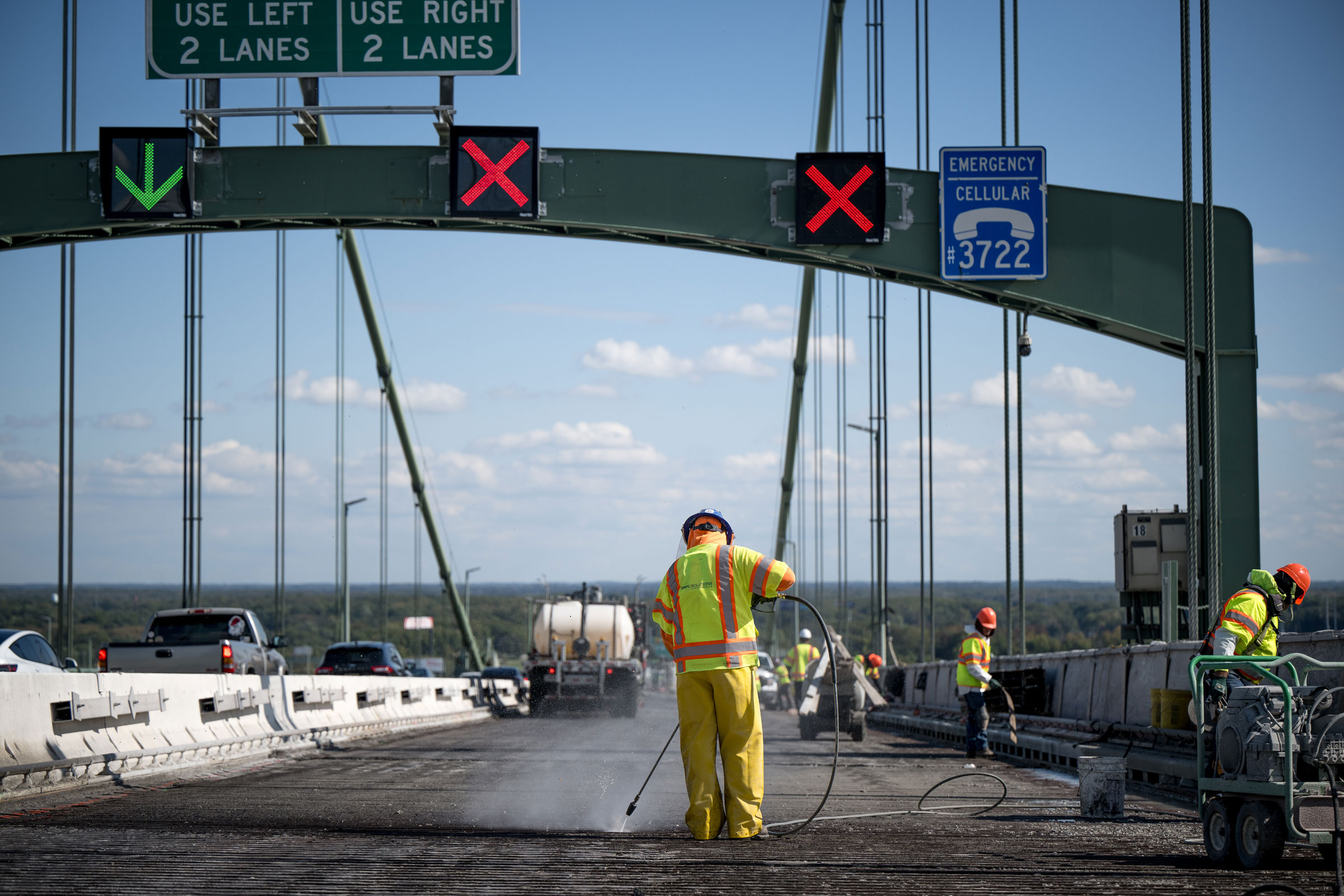Story at a glance:
- A strong mix of innovative solutions, expertise, and collaboration made the Delaware Memorial Bridge deck more durable and resilient.
- Chryso was part of a team that helped to make the project stronger and more sustainable.
In November 2023 a massive deck rehabilitation project on the Delaware Memorial Bridge was completed.
The Delaware Memorial Bridge is a pair of twin suspension bridges that span the Delaware River, connecting Delaware and New Jersey. Opened in 1951 and 1968, these massive toll bridges, each two- miles in length, are vital transportation links for the Northeastern region.
After over 60 years of service it was determined that a major deck rehabilitation was needed on the northbound bridge to prolong the service life of the existing deck. The two-year, three-phase rehabilitation project kicked off in September 2022, after a successful pilot installation was performed in 2020.
The Challenges
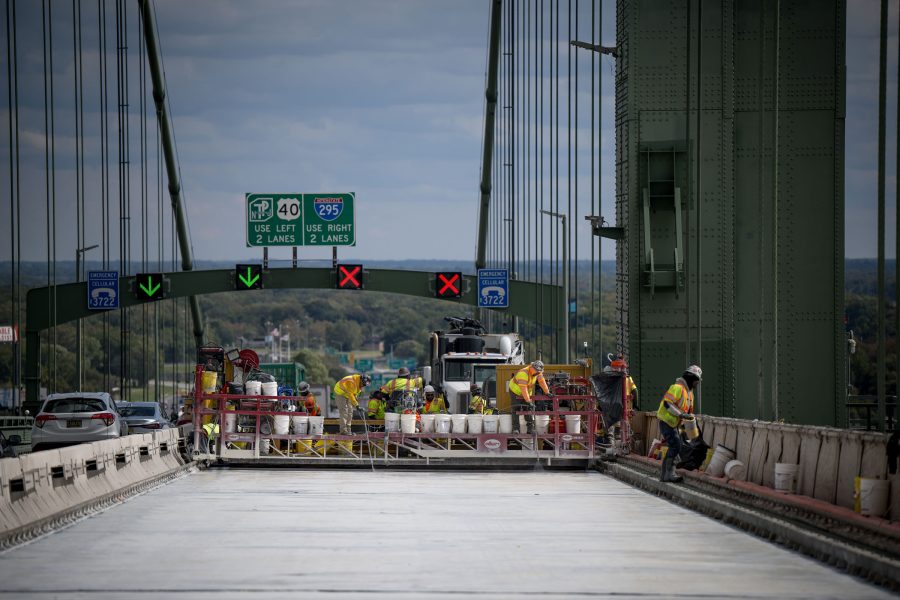
Photo courtesy of Chryso
As a vital toll bridge with more than 80,000 vehicles crossing daily, there were immense challenges to executing a major rehabilitation. Most notably was the disruption to traffic and the impact it would have on the travelers and the toll collections. The construction work could only be performed during specific timeframes when traffic volumes were relatively lower. Within these tight time windows a new, durable, high-performing deck needed to be installed, without adding more weight to the structure.
The Solution
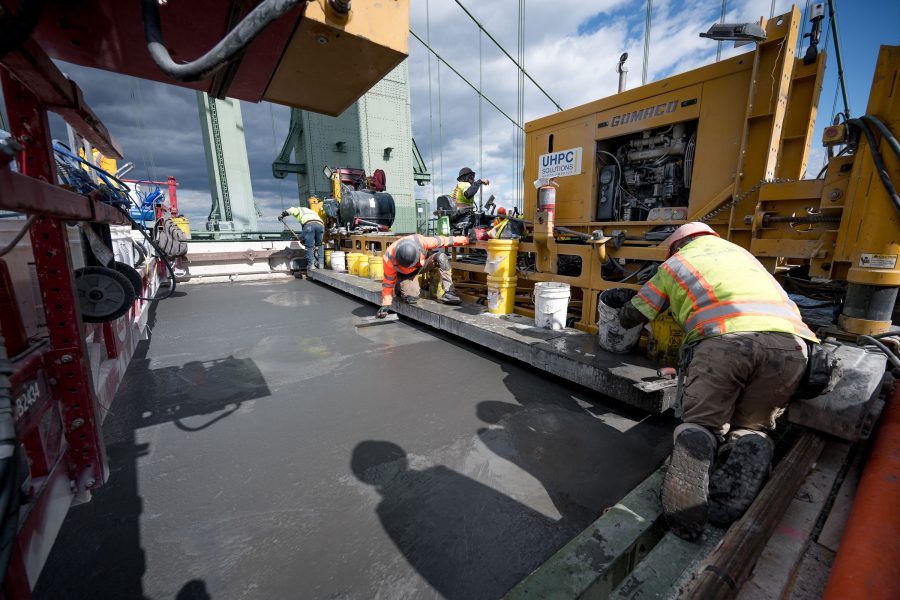
Photo courtesy of Chryso
The Delaware River & Bay Authority considered several options to repair or replace the existing bridge deck. After a life cycle cost analysis, the owner determined that the use of Ultra-High Performance Concrete (UHPC) was the preferred repair solution for the project. UHPC is an exceptionally strong and durable concrete material that often includes a large amount of fiber reinforcement and super-plasticizing agents.
The UHPC would be installed as a new overlay system along the length of the bridge to both protect and structurally strengthen the existing bridge deck. Additionally, this solution could be installed in much less time and at a significantly reduced cost compared to more significant repair techniques (e.g., full-depth deck replacement). Compared to a more traditional concrete overlay, a thinner layer of UHPC is needed, minimizing any additional weight to the structure, and it provides better long-term durability, lasting 50 years or more.
In September 2023 the third and final phase of the rehabilitation project began, which consisted of removing two to three inches of deteriorated concrete from the existing deck surface of the Northbound two right lanes on the New Jersey side, and then replacing it with an equivalent thickness of UHPC. To conquer the time constraints and make sure the new bridge deck will withstand the test of time, Ductal’s fiber-reinforced UHPC and Chryso’s admixture technologies were selected as the solution providers.
How They Did It
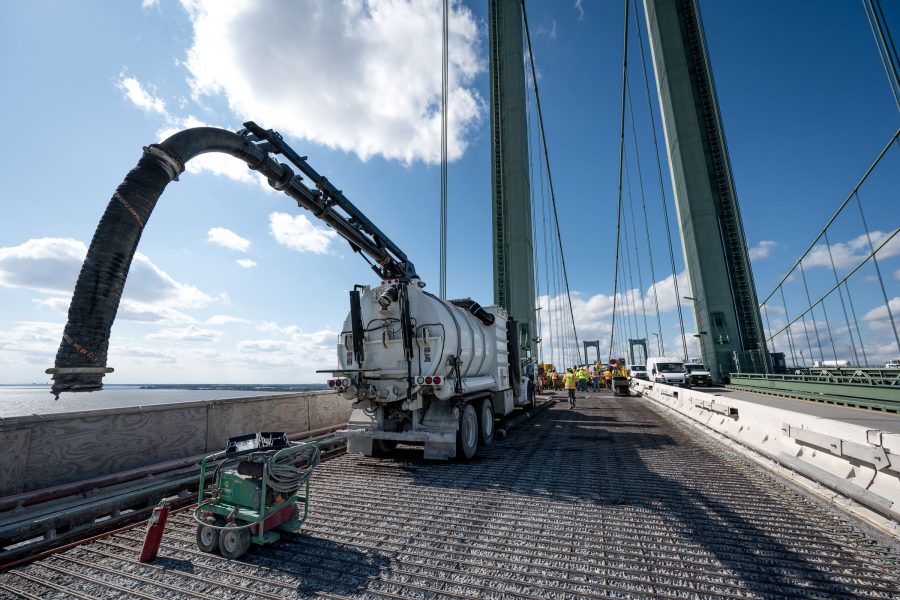
Photo courtesy of Chryso
In partnership with UHPC Solutions (the general contractor) and Ductal (the UHPC material supplier), the Chryso technical team helped identify the best admixtures for the
intended application.
The inclusion of the Chryso admixtures, such as high-range water reducers, allows for less batch water to be used in the UHPC mixture, producing a concrete that achieves more than 18,000 psi compressive strength—more than three times stronger than traditional bridge deck concrete. Additionally, the admixtures facilitated a concrete consistency that the contractor could pave in a downhill direction, which is not typically done in concrete paving. This allowed the contractor to condense their construction schedule, saving them both time and money.
More than 5,000 cubic yards of UHPC was installed on this project, which was placed using a specialty paver designed by the contractor and later diamond ground and grooved to ensure a smooth riding surface.
“The future of UHPC in construction is bright,” says Chryso North America President Steve Williams. “The greater strength with less material needed and longer service life of more than 50 years makes UHPC a key component in the sustainability goals of the construction industry. The use of UHPC on the Delaware Memorial Bridge deck rehabilitation project was the perfect fit, offering speed and lightweight durability. We were pleased to apply our admixture technologies to customize the UHPC so that it met all performance needs and ensure it will stand the test of time.”
The Results
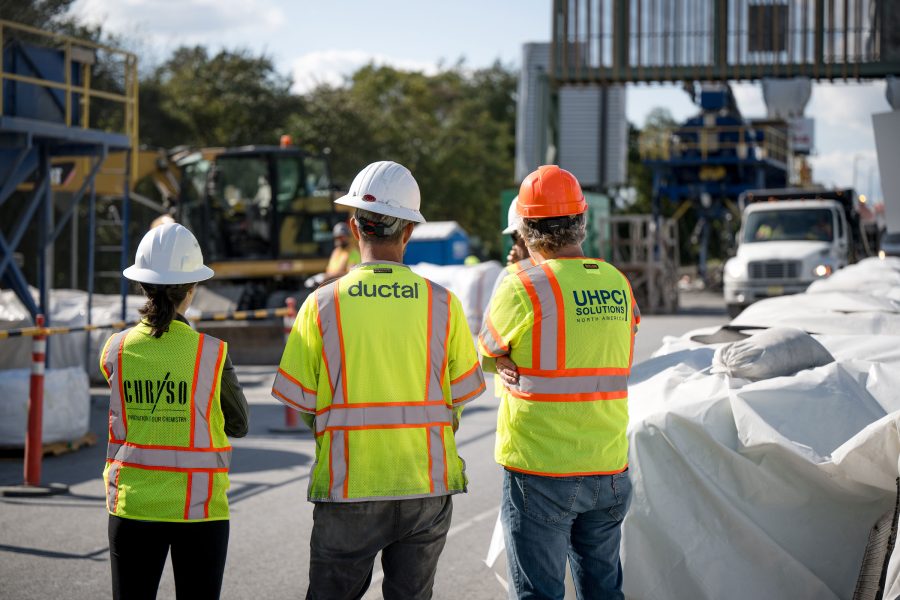
Photo courtesy of Chryso
In October 2024 Engineering News Record (ENR) Magazine honored the project as the winner of the 2024 Regional Best Project Award in the Mid-Atlantic Highway/Bridge category. The award recognizes groundbreaking design and construction teams across the United States.
The combination of Ductal’s concrete formulation expertise with Chryso’s admixture technologies, as well as the contractor’s optimized processes and equipment, overcame all challenges. The Chryso admixtures met all concrete rheology, strengths, finishability, and durability needs. The UHPC overlay was installed extremely quickly, shaving two weeks from the 11-week phase three construction window. In addition, the enhanced performance of the new UHPC equates to less overall concrete used, which further reduces the project’s CO2 impact.
“Holcim US and Ductal are very excited to bring our innovative UHPC solution to this signature bridge project,” says Greg Nault, technical manager for Ductal US. “Chryso’s specialty admixtures continue to work exceptionally well in our Ductal products and allow us to cultivate new innovations for the construction industry. We look forward to more opportunities like this in the near future.”
The project is the first of its kind in the US, according to Gil Brindley, UHPC North America Director. “It is the first suspension bridge to have a UHPC overlay, the largest UHPC project in the US, and broke records for UHPC placed in a single day,” Brindley says. “The success of the project is due to the partnership of all those involved. From the owner and designer, material suppliers and subcontractors, to the workforce who performed the work, everyone played an important role and worked collaboratively to make this project a reality.”
Thanks to the innovations, expertise and collaboration, the bridge deck is now more durable and resilient with a low financial impact.

